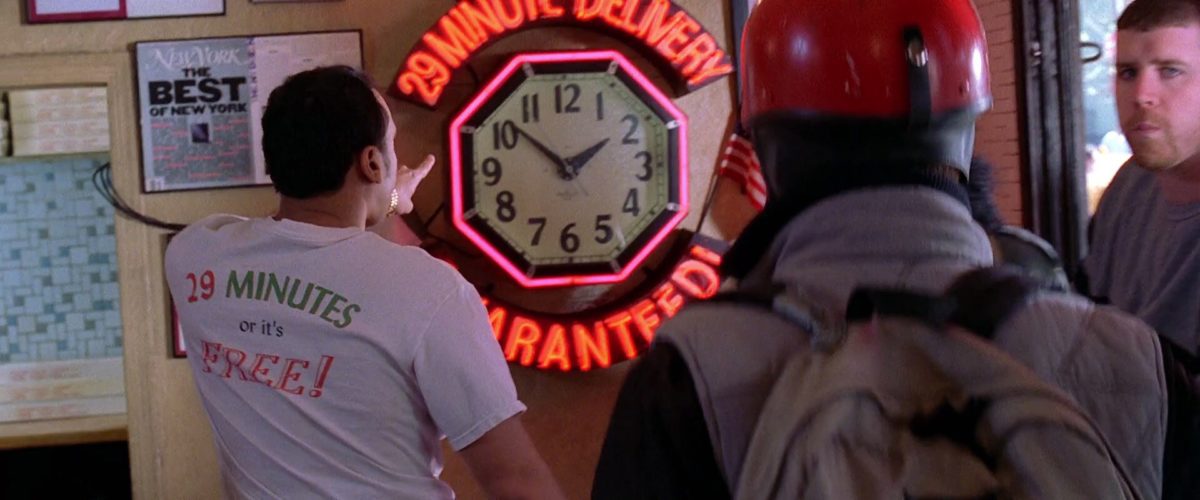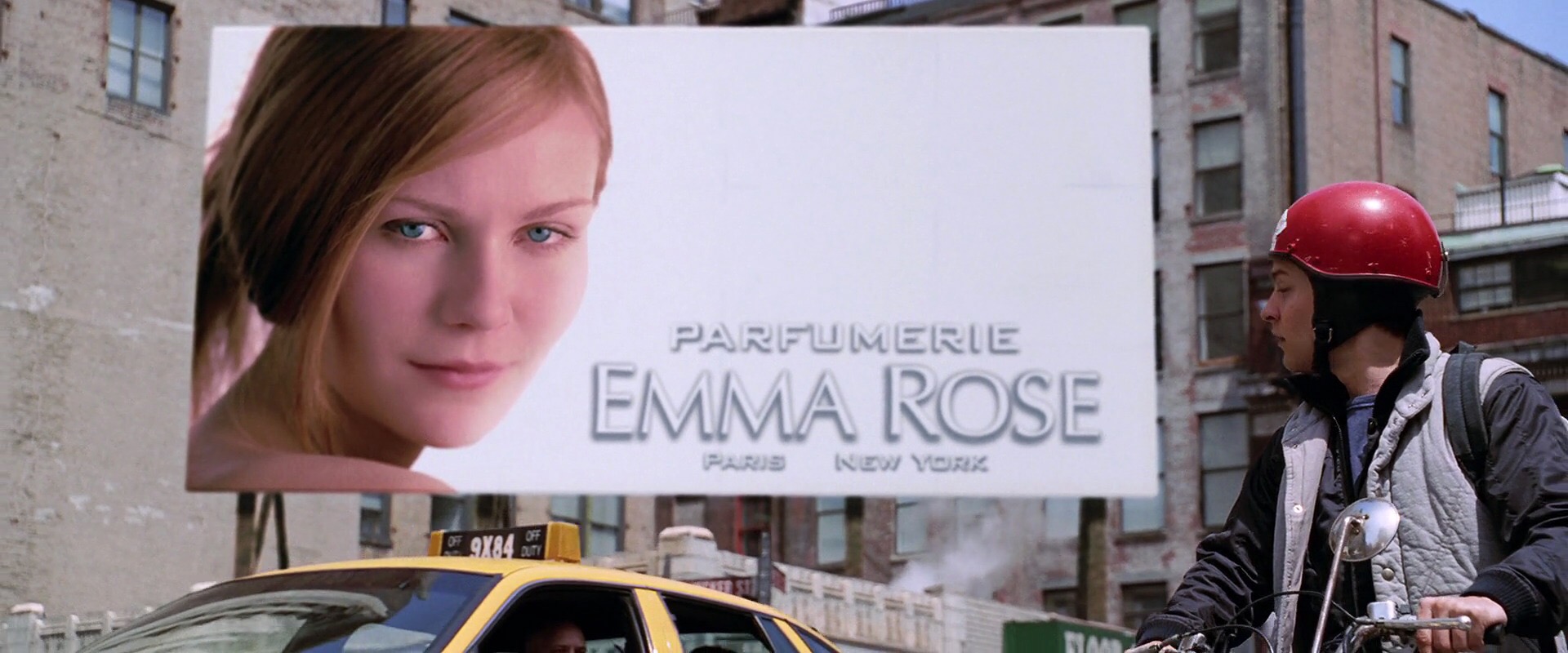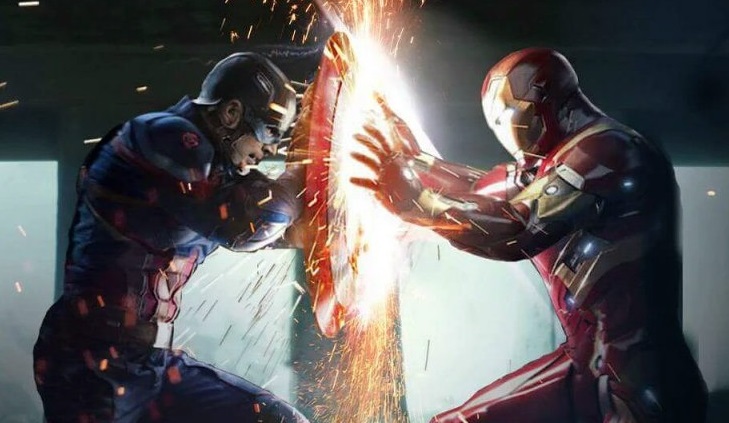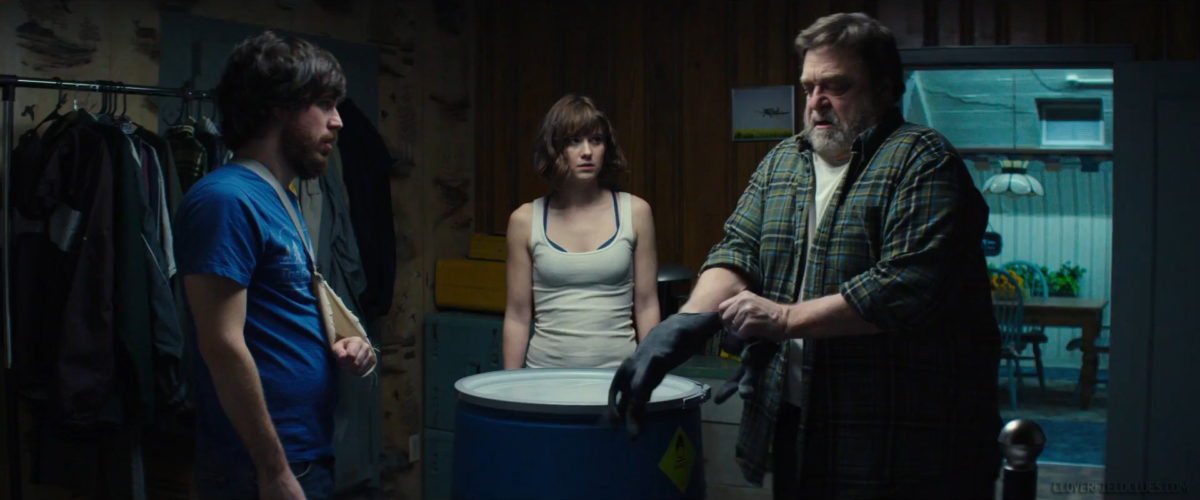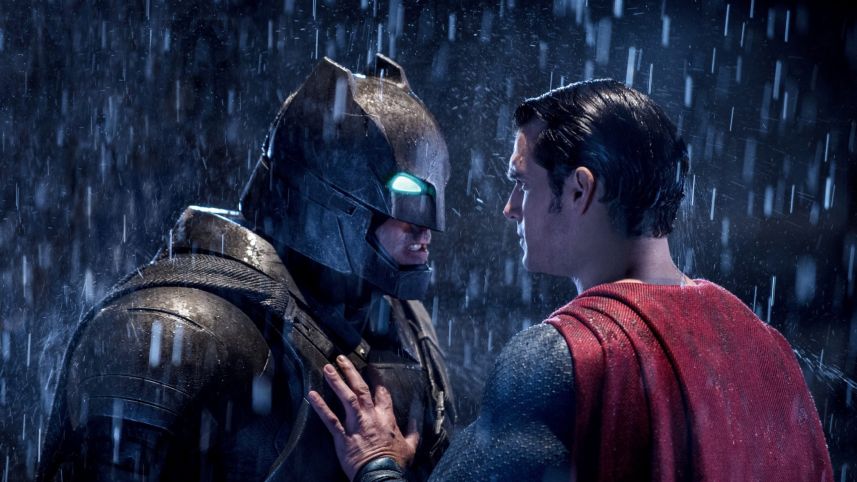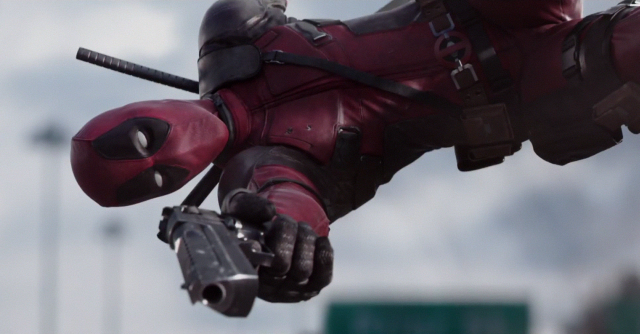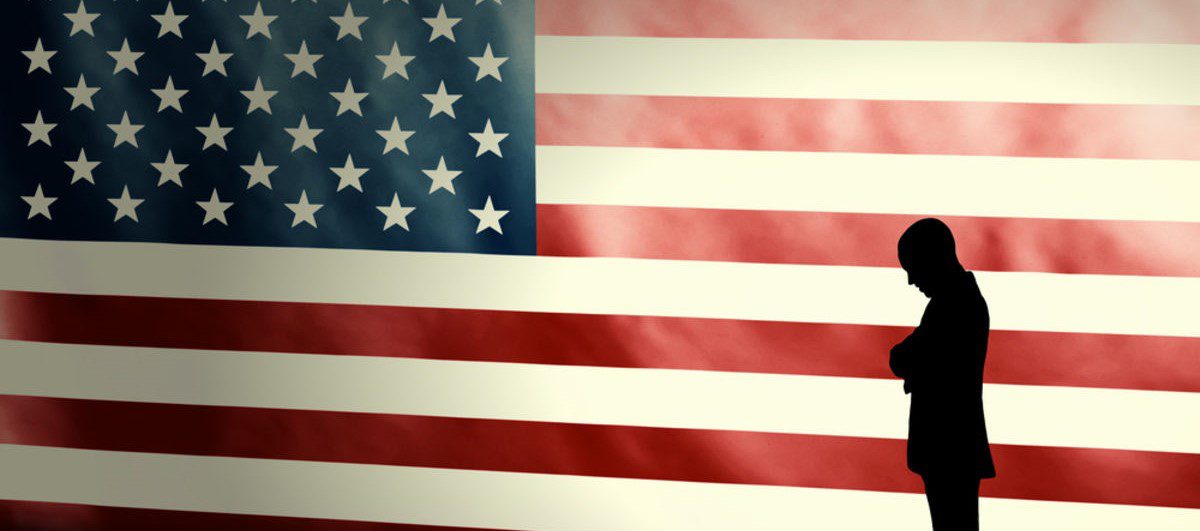Two screenshots should be plenty of information to identify any movie… Right? Take a look and leave your answer in the comments below.
Category Archives: Genre
Mystery Movie
Captain America: Civil War (2016)
When Marvel Studios began ambitiously building towards the first Avengers movie, many openly wondered: “How can they even hope to do this?” Many times over the years, most notably in Sam Raimi’s bloated Spider-Man 3, too many characters clogged up the screen, diluting that film and others like it of any real focus. This was a legitimate concern for Marvel and for The Avengers, a movie that was going to star not one, but seven superheroes. Now we jump ahead to 2016 and seven superheroes suddenly doesn’t seem like such a big number. Now Marvel has arrived with Captain America: Civil War, the latest in their progressively expanding franchise, with a lineup that includes 12 superheroes and three villains. Have we reached maximum capacity superhero? Was this finally, once and for all, just too much?
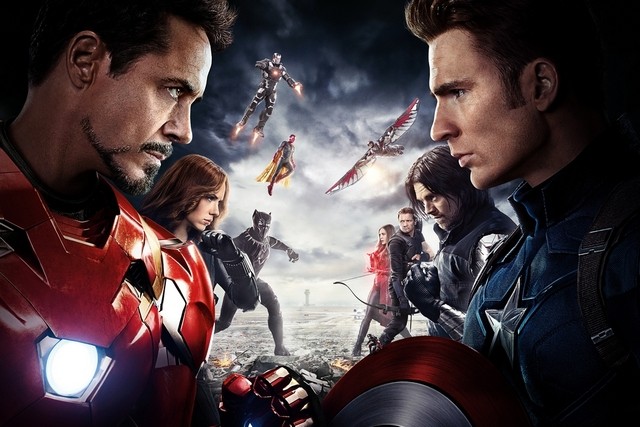
Judging from the $1.1 billion that this film has grossed worldwide, I would say that is a big NOPE. Captain America: Civil War doesn’t even feel like a crowded restaurant on a Friday night. Suddenly, I can imagine the whole mutant universe from the X-Men films joining with the Fantastic Four and the Guardians of the Galaxy. I’m getting excited just thinking about it. I will try not to spoil anything major however, if you haven’t seen this film stop reading and find a theater and go see it. It won’t be there much longer. Soon it will be moving to Blu-Ray and will hold a permanent spot on my shelf. Also, since this is a sequel to other Marvel Cinematic Universe (MCU) films you should be familiar with them as well.
Civil War is loosely based on a 2006-2007 Marvel comics storyline, the film serves as a sequel to both Captain America: The Winter Soldier and Avengers: Age of Ultron. The film opens with Captain America and a small group of Avengers — Falcon, Black Widow and Scarlet Witch — teaming to stop Crossbones from stealing a biological weapon. Crossbones is Frank Grillo who survived the ending of Winter Soldier, but now has a severely scarred face and jackhammer fists. Despite stopping Crossbones, the operation ends poorly, resulting in a number of civilian casualties.
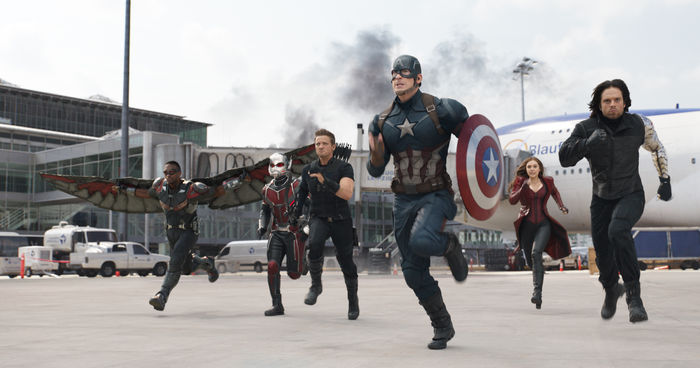
The Captain and team are called into the office of the Secretary of State, Gen. Thaddeus “Thunderbolt” Ross. You’ll remember him from 2008’s The Incredible Hulk. Following the events of Age of Ultron, the United Nations drew up the Sokovia Accords, a treaty that would essentially put the governing nations in charge of The Avengers. Tony, after being confronted by a mother who blamed him for the death of her son in Sokovia, is feeling guilty and sides with Ross arguing that the Avengers need to be put into check.
Naturally in a movie subtitled Civil War, not everyone agrees. There are some polite arguments and disagreements until a terrorist attack at a United Nations conference is blamed on Winter Soldier. Polite arguments quickly heat up as Cap defends his BFF and is determined to keep him concealed as they attempt to prove his innocence. With the Sokovia Accords now signed, Ross wants Captain America and his team arrested. Tony Stark asks for 36 hours to bring them in without incident. Let the Civil War begin.

In a movie that has an almost literal army of superheroes — Captain America, Iron Man, Winter Soldier, Falcon, Hawkeye, Black Widow, Scarlet Witch, Vision, Black Panther, Spider-Man, War Machine, Ant-Man, it’s almost remarkable that a movie this big can still feel intimate. True to its name, Civil War remains a movie about Steve Rogers and Bucky Barnes, two friends from Brooklyn and their enduring relationship over 60 years. However, this movie is definitely not a bromantic comedy.
Captain America: Civil War includes some of the finest action in a Marvel movie, including a glorious showstopper extended battle sequence between Team Cap and Team Iron Man at a Berlin airport. It’s a magnificent and exhilarating scene that never once feels overstuffed or confused, despite the sheer enormity of the action. What could serve as the detriment to some hero-stuffed movies, actually works to the advantage of Civil War. Part of what is so delightful is how easily the characters, the majority of which we’ve come to know over the course of 13 Marvel Studios movies, interact and play off each other. Scarlet Witch using her powers to allow Captain America to super jump into a high-rise building. Hawkeye firing a miniaturized Ant-Man on an arrow inside Iron Man’s armor. Spider-Man using his webbing to wrap up…OK that one is too good to spoil here.
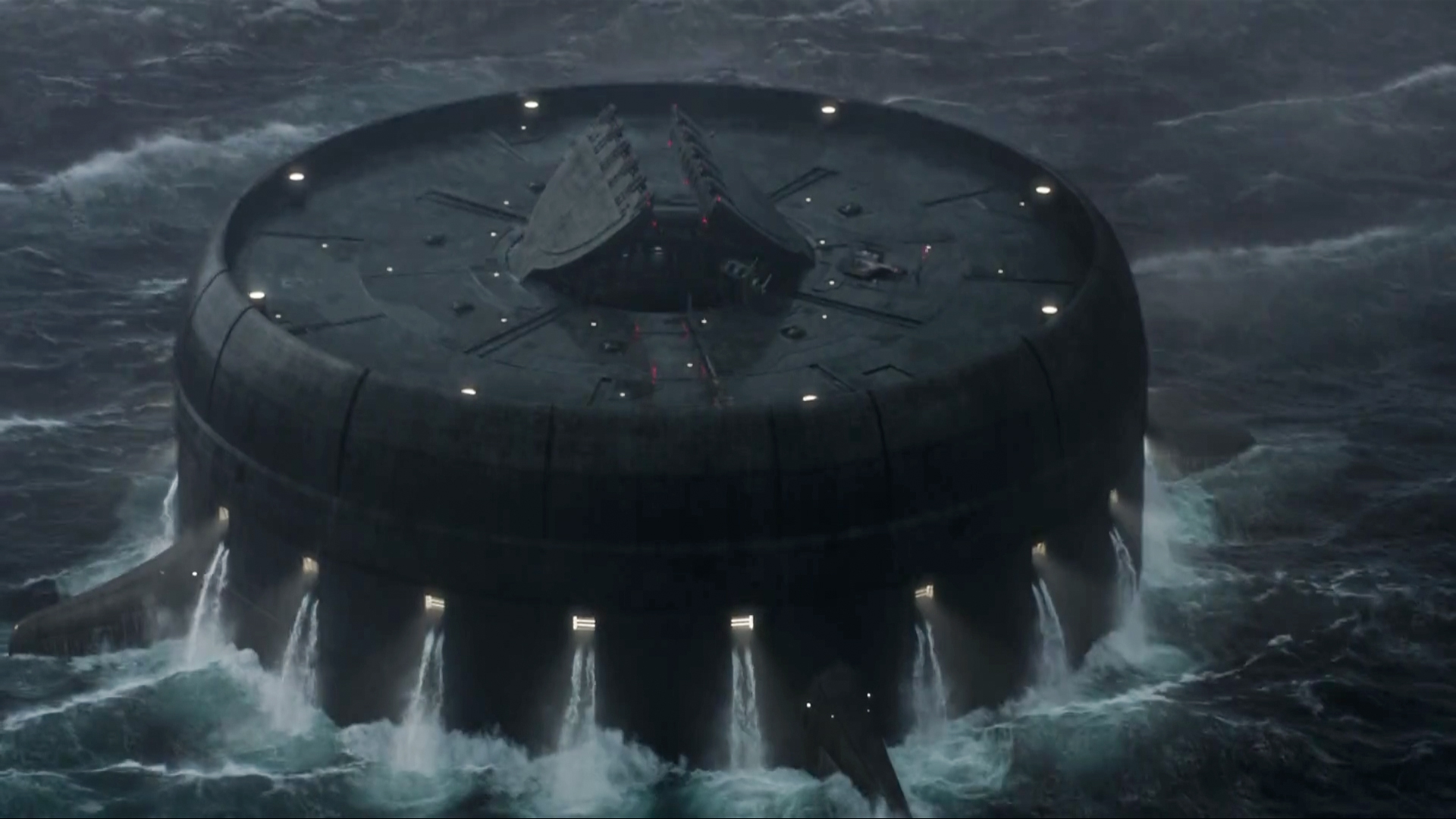
After this sequence, which would be an extremely hard act to follow, directors Joe and Anthony Russo wisely dial back the scope of the film. Instead of trying to go even bigger and having our heroes fight against a giant, spiny, CGI glob, the focus shifts to our three main protagonists: Tony, Steve and Bucky. While more than one character manipulates the events of this film for their own nefarious purposes, it all comes down to these characters, ultimately Captain America vs. Iron Man, and their own beliefs, personalities, neuroses and paranoias coming out to play. Tony expresses resentment over how his father, Howard Stark, liked Steve Rogers more than he liked his own son. Steve repeats a line a pre-Super Serum Steve told a group of bullies who were beating him up in an alley (“I could do this all day”).
This is not some hastily assembled superhero brawl to sell more movie tickets; These two have been bickering and brawling over the course of two Avengers movies — one of their very first conversations includes Cap telling Stark, “Put on the suit, let’s go a few rounds.” — and that all comes to a head over the course of the film, whose finale feels earned rather than mandated by the mechanics of the plot. If the idea of watching even more superheroes punch each other after Batman vs. Superman feels like a chore, let me assure you this film could not be more dissimilar. While slightly overlong, this movie is bright, creative, insightful, affecting and, above all else, fun.

Here’s how enjoyable Captain America: Civil War is: Much has been made about Spider-Man returning to the Marvel Cinematic Universe after a few disastrous movies over at Sony Pictures. I was acutely aware and excited that Spider-Man would be making his debut in this movie alongside Captain America, Iron Man and the rest of the Avengers. Yet midway through the movie, I was so invested in the film, that when Spider-Man shows, it was a legitimate surprise. Civil War is so entertaining that I actually forgot Spider-Man was coming. It’s like enjoying a delicious meal and then the chef reminds you that was just the first course.
By the time Avengers: Infinity War – Part 1 charges into theaters in 2018, who knows how massive the film’s roster of superheroes and supervillains will have expanded to, and whether that will be too much. Just a few years ago I would have argued that this film would be “too much.” However, for now, it turns out that “too much” may be just enough.
Where to Invade Next (2015)
What’s a conservative Christian like me doing watching a documentary from progressive activist and documentarian Michael Moore? I have actually watched all of his documentaries, most of which focus on a mean-spirited critique of America’s economic and social structure. Most of them make some good points about how Americans have allowed corporate greed and political bureaucracy to get us away from being the nation that our founding fathers established.
[youtube https://www.youtube.com/watch?v=yu5B3M2Ogjo&w=560&h=315]
His most recent film is all about this theme, however he changes up his theme in a big way. It is not a critique, but a graceful and witty film that offers possible solutions to the problems that Moore believes plague the United States. He identifies these solutions by “invading” countries in Europe and North Africa with the hopes to take some of their best ideas back to the US.
Moore admits that he looks only at each country’s positive achievements and ignores its problems. He uses each country to illustrate one way government can help citizens navigate through the various stages of their lives – education, employment, parenthood, and retirement. Moore celebrates the ways these countries have found to temper Capitalism with strict regulations and a solid set of social-welfare programs.
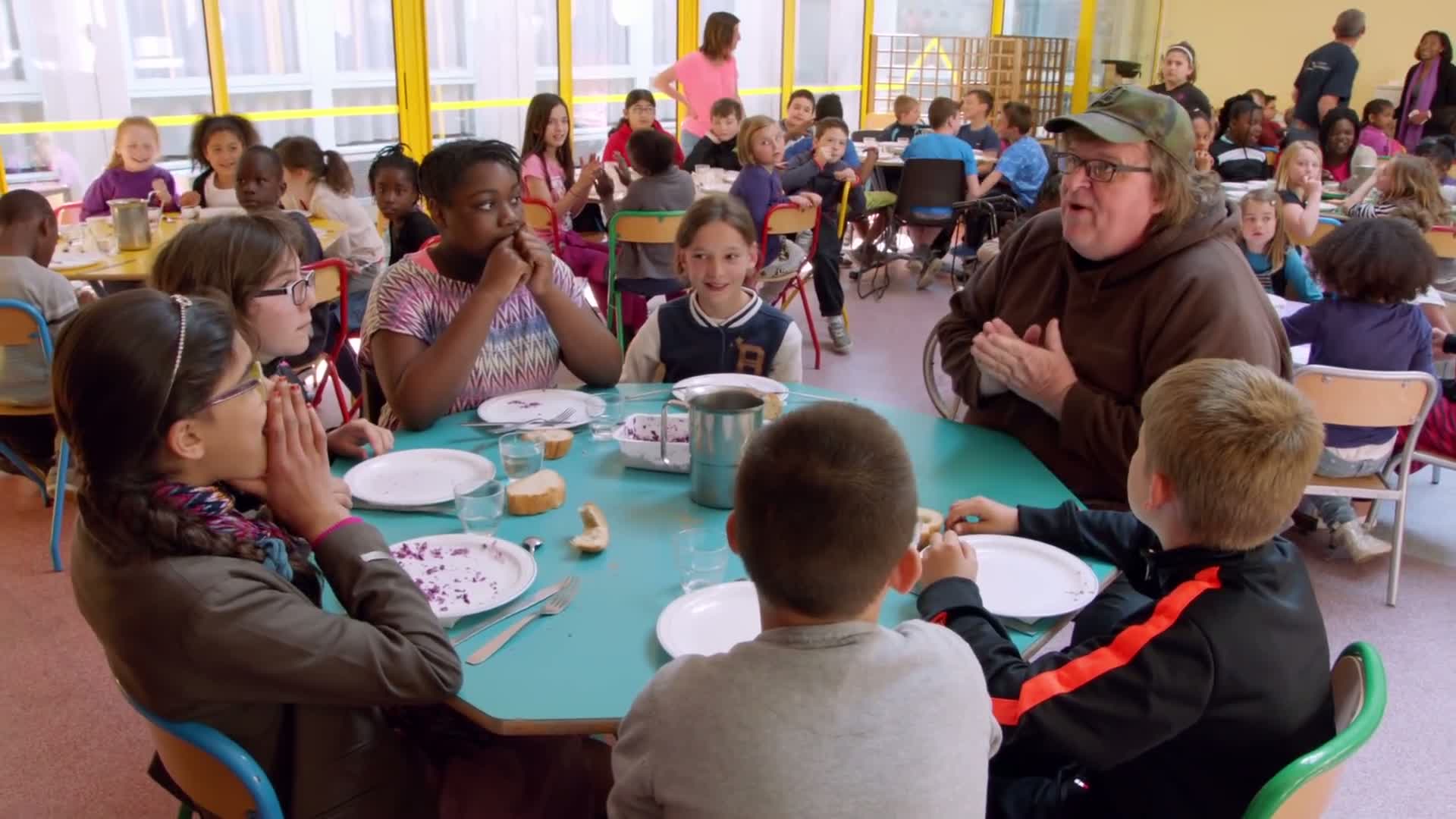
In Italy, he chats with a couple about a law that compels employers to provide up to 22 weeks of paid maternity leave. As Moore reminds viewers, America is the only country in the world besides Papua New Guinea that doesn’t provide its citizens with paid maternity leave. In France, he hangs out at a public school that treats the lunch hour as part of the curriculum. The school chef cooks fresh meals daily using local ingredients. It’s far cheaper per head, Moore argues, than the gross frozen food that American schools buy in bulk.
He visits a factory in Germany where he learns that, by law, rank-and-file employees must make up 50 percent of each company’s governing board. Another law forbids bosses from contacting employees who are on vacation. These examples show that Europeans – at least those Moore profiles – value quality of life far more than wealth.
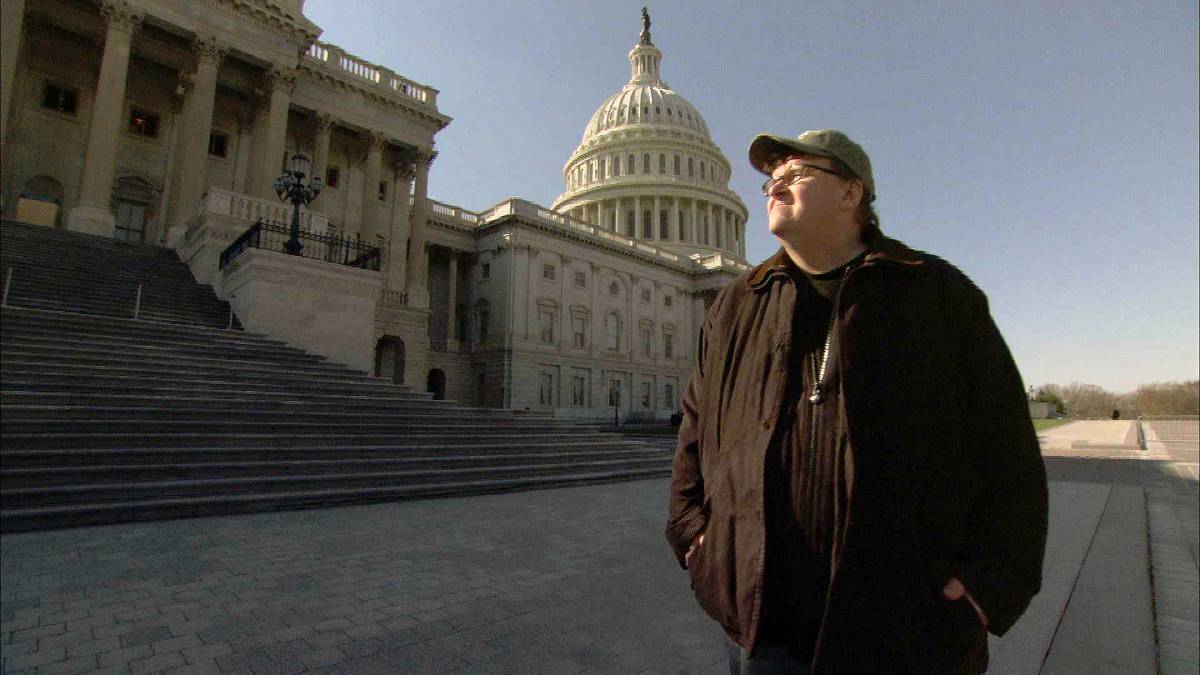
Where to Invade Next is Moore’s most radical film because it shows there are countries that refuse to shape policy according to the logic of profit and wealth alone, but also factor in the notion of the public good. The higher taxes their citizens pay goes to establish free health care, cheap day care, well-funded public schools. If those needs are met, Moore argues, people are less likely to be obsessed with wealth and more concerned about forming social bonds. It would take a massive revolution to make these things happen in America, but our nation was formed through a massive revolution, perhaps it is time for another one that brings us back to where we should be.
10 Cloverfield Lane (2016)
Two months ago, no one knew that 10 Cloverfield Lane existed, let alone was about to be wide released in theaters. One month ago, no one had any idea how, if at all, this film was related to the 2008 film Cloverfield except for the obvious title and the fact that J.J. Abrams’ name was tied to the project. Not sure how Abrams had time with Star Wars: The Force Awakens to hide this project from the world, but I’m glad he did.
[youtube https://www.youtube.com/watch?v=saHzng8fxLs]
One of the greatest things 10 Cloverfield Lane has to offer is that the audience really has no idea what to expect going into the film. Very much in the J.J Abrams way, the production for this film has been left completely under-wraps and the trailers have revealed next to nothing. That’s one of the best parts of the movie, so I’m not going to spoil or give anything away in my synopsis or the review. I won’t even tell you if this movie is indeed a Cloverfield sequel or if it’s something different altogether. You’ll have to find out for yourself. But I will say that it is worth checking out whether or not you have any knowledge of Cloverfield. It only cost a measly 15 million to make this film and it nearly doubled that on its opening night. It’s a good film all by itself. It won’t win any Oscars, but it was compelling and fun.

A woman we know very little about named Michelle (Mary Elizabeth Winstead) is involved in a car crash in a breath taking opening credit sequence. She wakes up a few days later to find herself in an underground bunker with Howard (John Goodman), a large and crazy-eyed farmer standing above her. He tells her that she can’t leave, because some sort of disaster has happened and it’s not safe to go outside. Finding herself alone with Howard and another man named Emmett (John Gallagher Jr.), and I’m stealing their tag line here because it’s a dang good tag line, they find out that monsters come in many forms.
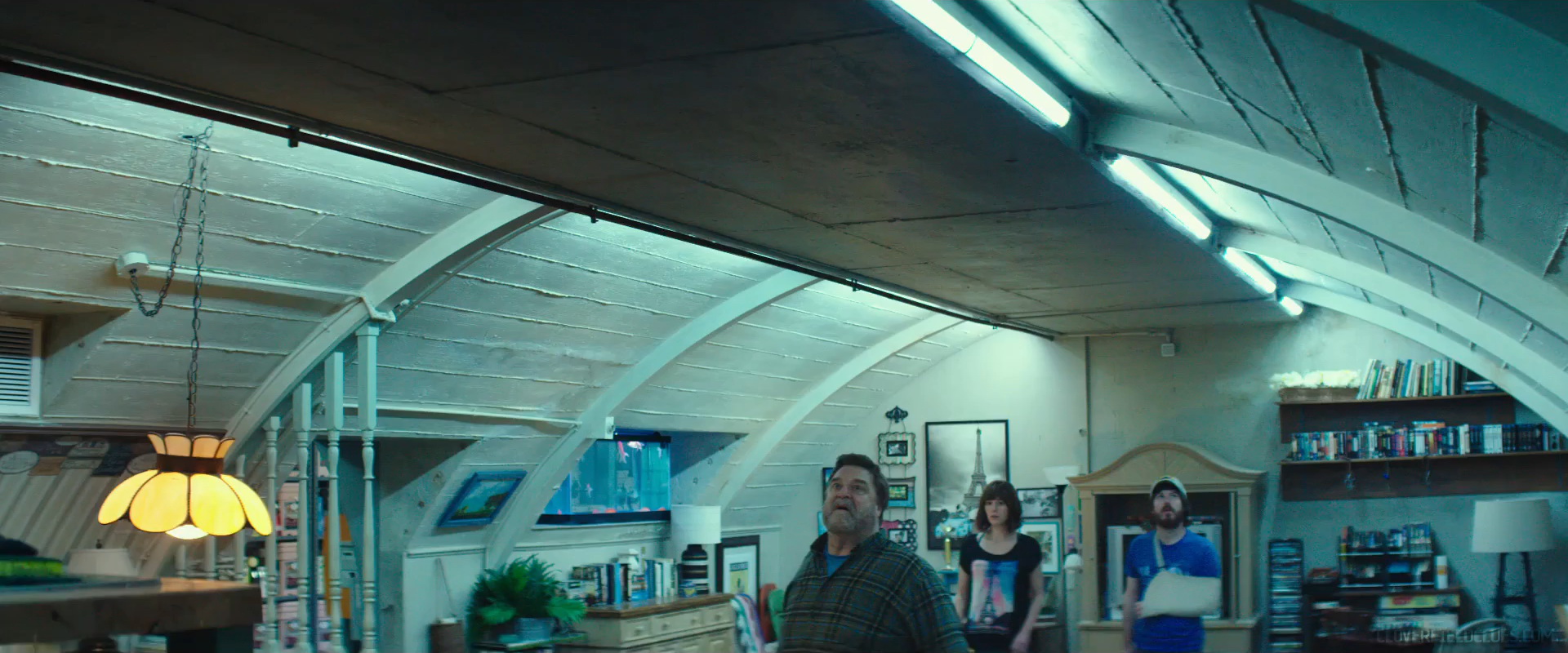
Obviously, I had no idea to expect when I saw 10 Cloverfield Lane. No one did. But within the first five minutes they set the tone so you know what kind of movie they are going for, and I found myself instantly engaged. For the rest of the film, I was floored with what was going on. In his directorial debut, Dan Trachtenberg takes the reigns on creating a film that will hit you with the unexpected, and leave you shocked.

The best word I could think of to describe this film while I was watching it was claustrophobic. Trapped with Michelle inside the bunker, they create such an intense and nervous atmosphere that you feel yourself getting antsy along with the characters. Because for almost the whole film, we don’t really know what’s going on. We know what Howard is telling us and leading us to believe, but we have no idea if that’s reliable or not. We discover things along with the characters, which is why this film is such a good build up. When the conclusion to the film finally comes, you will leave more than satisfied. But don’t ruin it for yourself by looking up online spoilers to see if it is a Cloverfield sequel. See the movie. Find out for yourself. It’s worth it.
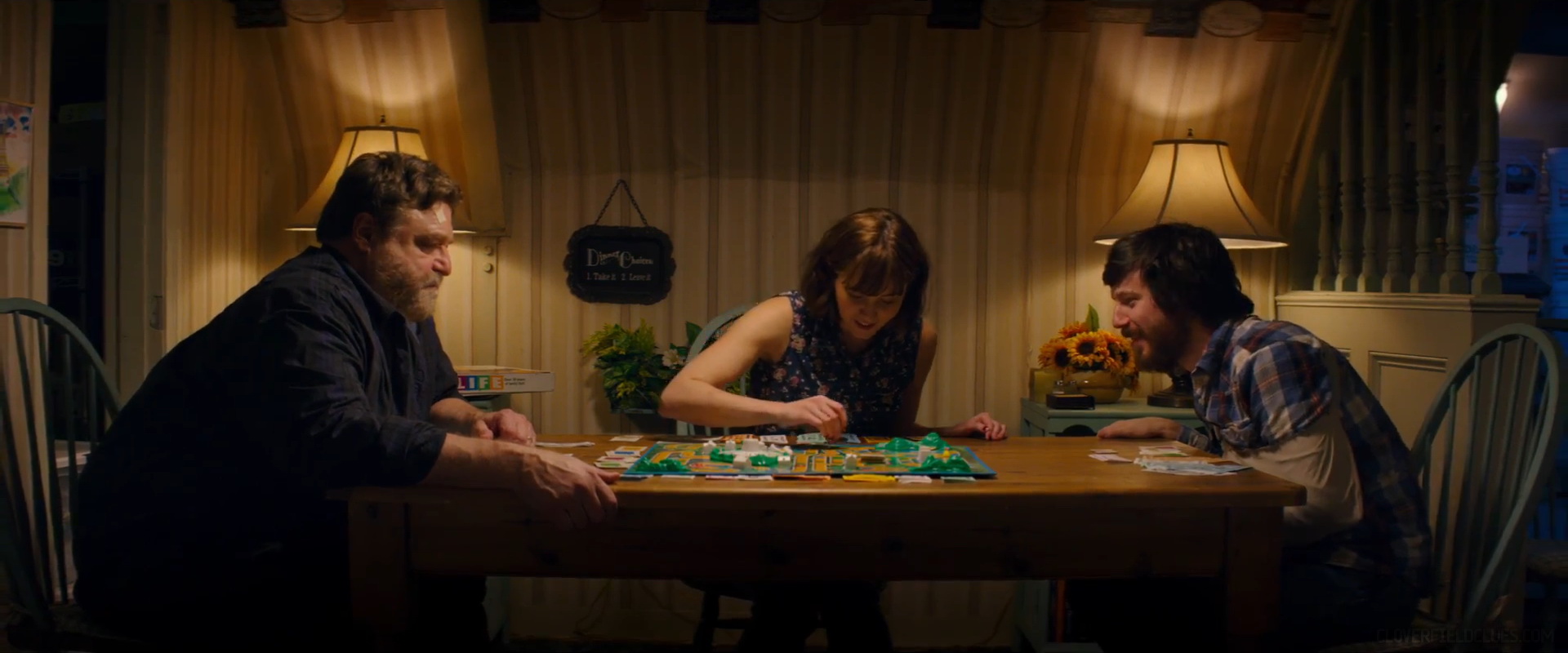
The stand-out performance of the film is John Goodman. He is in so many films every year that we sometimes take him for granted and forget how good of an actor he can be when he’s not mailing it in, but rather commits whole heartedly to a role. That’s what happens here. He could have easily over-cooked his performance where it came of as cartoony or unrealistic, but he hit just the right level of disturbing and off-putting where you are crept out by the guy but you can’t be sure if he’s in the right or wrong. It’s a performance similar to Joel Edgerton’s in The Gift.

At no point of 10 Cloverfield Lane does the film slow down or lose interest. It uses it’s hour and forty five minute runtime (a surprisingly long one for this type of film) to achieve the best possible effects. The film flies by and I found myself never wanting it to be over.
10 Cloverfield Lane is a movie you should see without being tainted by spoilers. Accept that you know nothing about it going in, and enjoy that experience. Because it’s something that doesn’t happen often and it’s a rare gift when it does. 10 Cloverfield Lane has a lot to offer despite the fact that it’s a very small film. So if it is still playing near you, go see it this weekend. Don’t look for other trailers or read other reviews. Just go, then come back here and tell me what you thought.
X-Men Apocalypse (2016)
The X-Men are back on the big screen for a sequel (or is it a prequel?) featuring a whole slew of characters with dual identities, giving these actors resume credits such as “Scott Summers/Cyclops,” “Peter Maximoff/Quicksilver” and of course “En Sabah Nur/Apocalypse.” I tried to avoid any real spoilers, but as always, reviews are always best when you’ve already seen the movie and can add your commentary.

X-Men: Apocalypse is set in 1983, some 10 years after the events of X-Men: Days of Future Past. Erik Lehnsherr/Magneto (the fantastic Michael Fassbender), is living in Poland under an assumed name, laboring as an iron-worker (can you imagine a better blue collar job for Magneto?) and coming home each night to his loving wife and adoring daughter. For this tortured soul, it’s as close to paradise as he’ll ever come — as long as nobody finds out who he really is and what he did in Washington 10 years ago. I don’t think I’m spoiling anything when I tell you that Erik does not spend the entire movie reading bedtime stories to his little girl. I was impressed with the powerful and even realistic tone of this story line. It could have made for a fine film all its own.
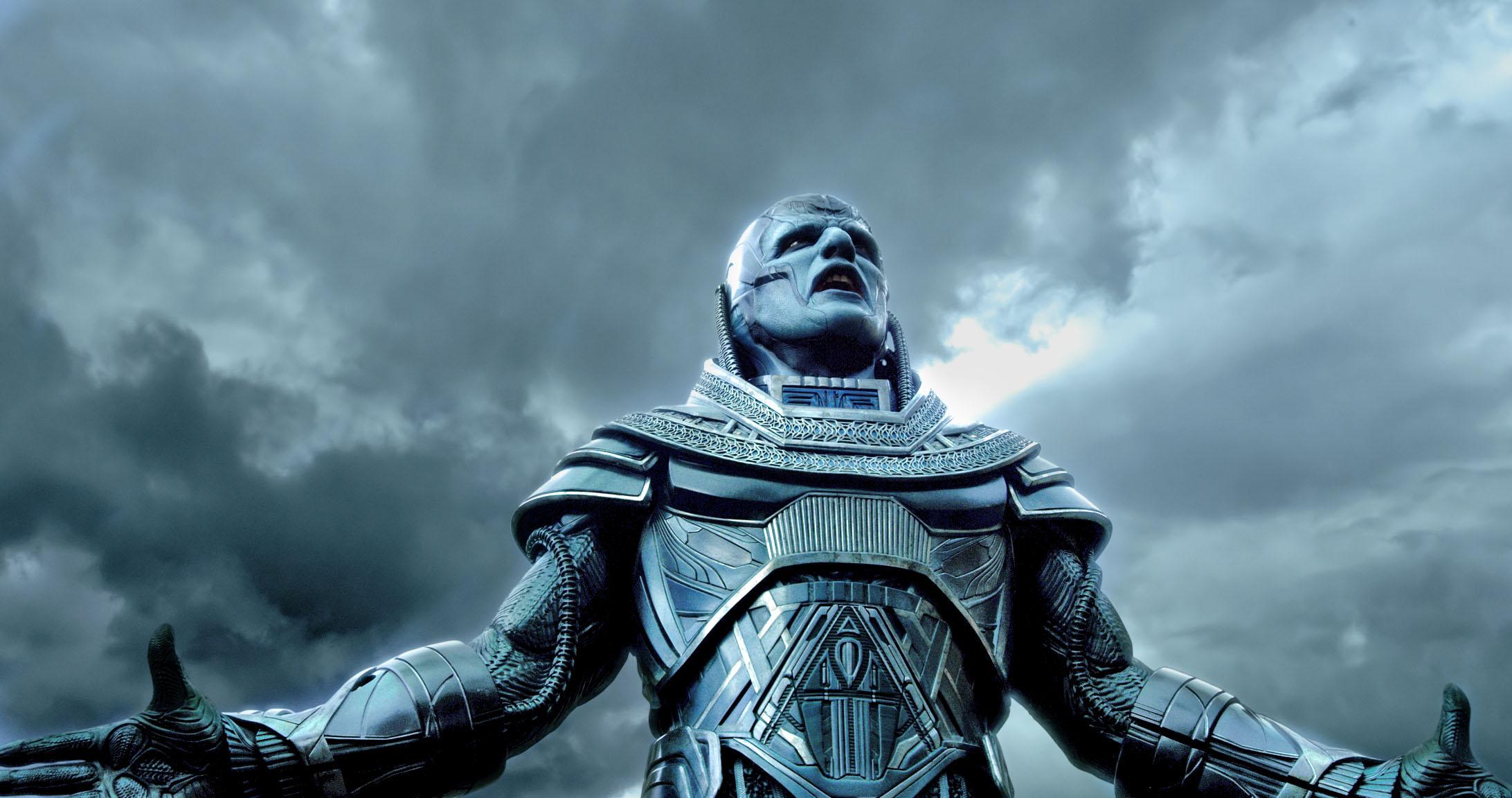
I was surprised to find out that Oscar Isaac played Apocalypse, a man whom some believe to be the first mutant, he was so covered in makeup, prosthesis, and tubing that he was completely unrecognizable. Apocalypse awakens from the slumber of many thousand years and is shocked to find that weak, normal people have managed to assume control of the world through government, technology, and weapons. This is appalling to him and he vows to destroy the world and rule over the survivors as he rebuilds it in his twisted image.

Meanwhile, back at Xavier’s School for Gifted Youngsters, Professor Charles Xavier (The talented James McAvoy) mentors two familiar young mutants. Scott Summers/Cyclops (Tye Sheridan), has yet to learn how to control the deadly beams that shoot from his eyes, and the telepathic Jean Grey (Sophie Turner from “Game of Thrones”) draws whispered stares from other students because they are frightened of her unbridaled abilities. Sparks are definitely flying between these two.
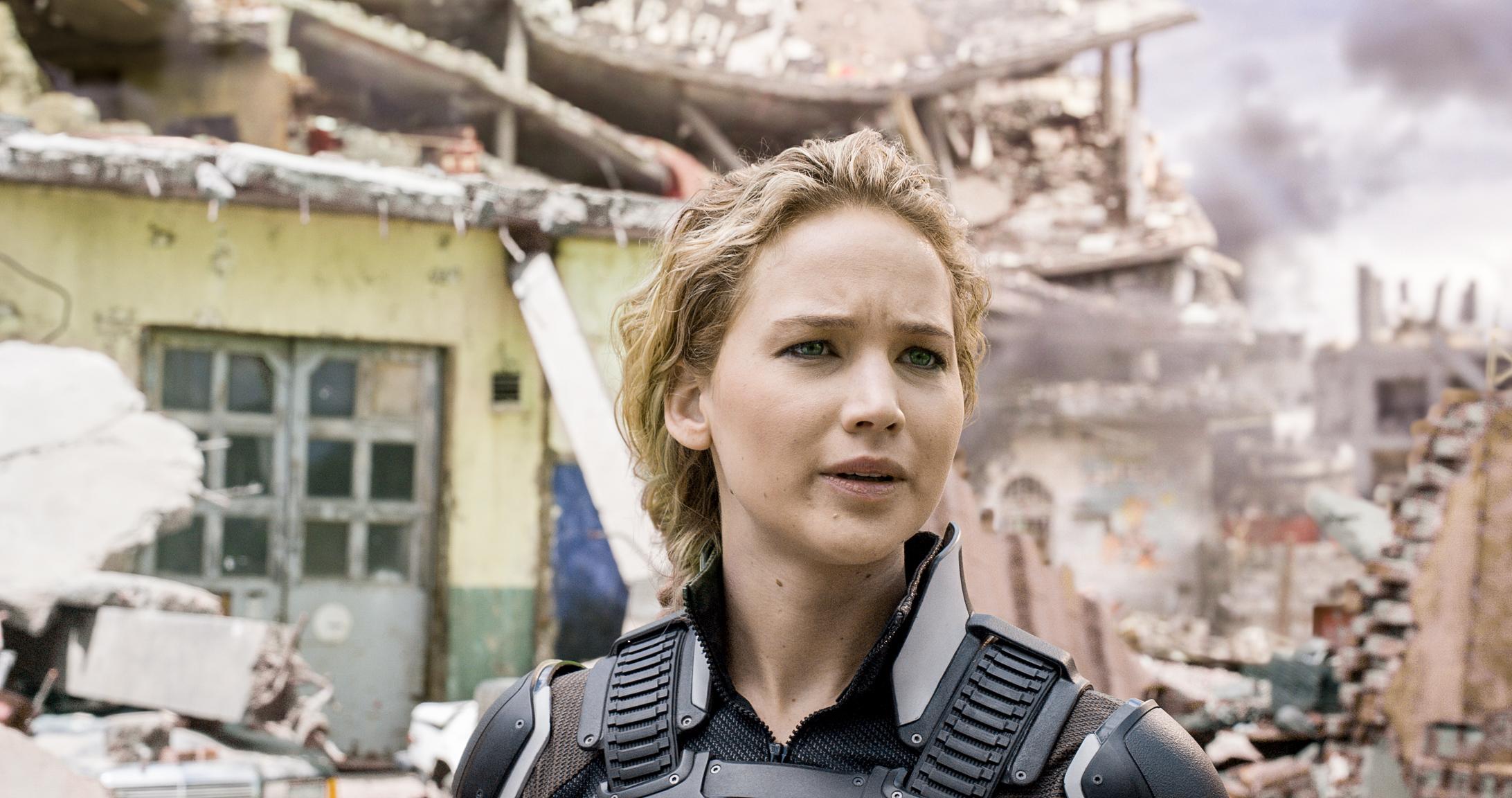
There are so many more characters that received excellent treatment. The introduction of Psylocke (played by every fanboy’s dream, Olivia Munn), and the return of the Blue X-Man Group featuring young KurtWagner/Nightcrawler (Kodi Smit-McPhee), Raven/Mystique (played by every other fanboy’s dream, Jennifer Lawrence), and Hank McCoy/Beast (Nicholas Hoult). Alexandra Shipp’s first turn in the iconic role of Ororo Munroe/Storm was solid, although in my opinion you average weather reporter could do better than Halle Berry.
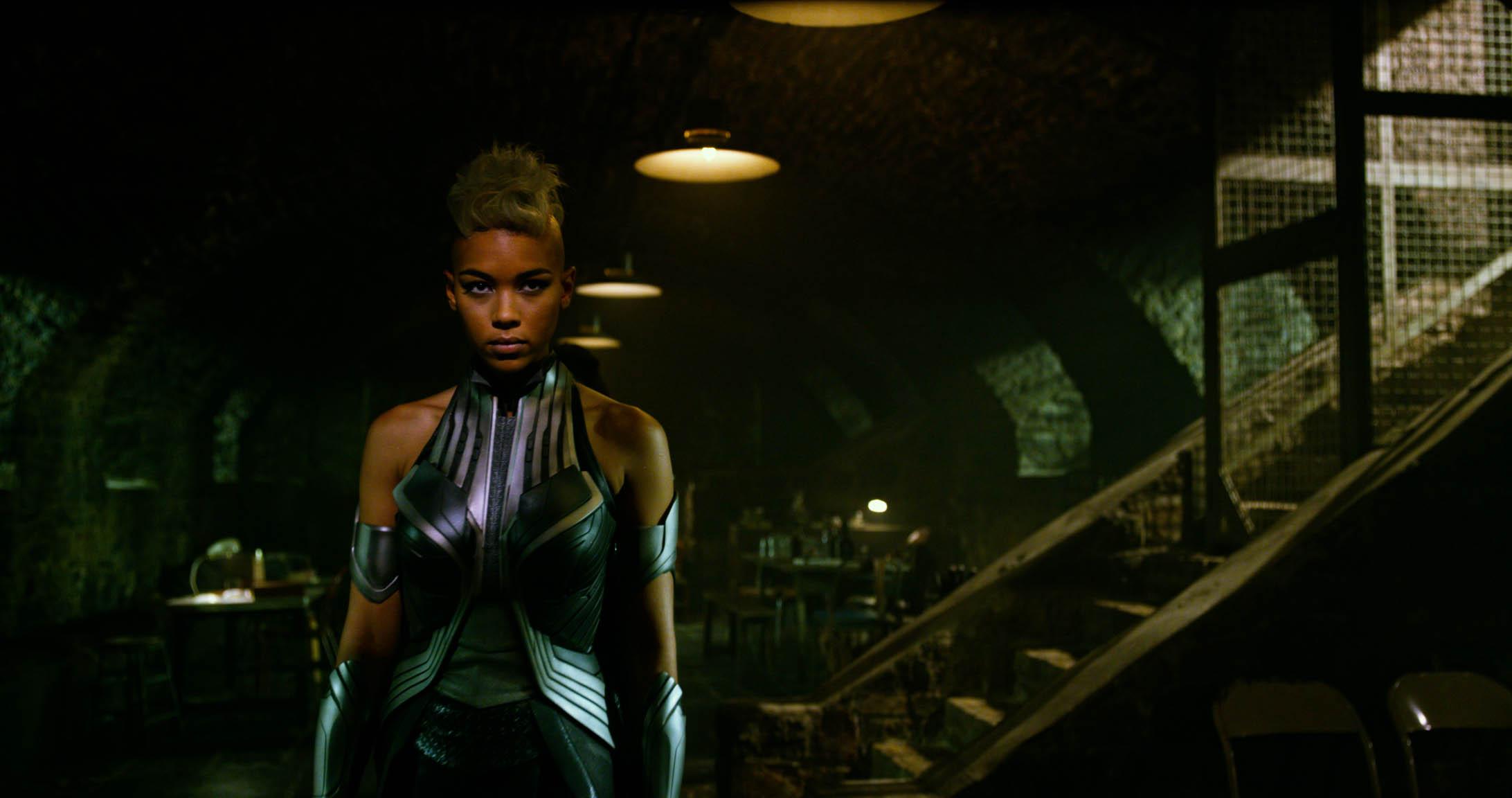
This isn’t the best X-Men film of the franchise, but it’s a visual spectacle, brimming with great performances. It doesn’t take itself too seriously, with characters making self-referential jokes about the third movie in a series always being the worst as they walk out of a theater having just seen Return of the Jedi. And they fully embrace the 80’s setting with TAB soda, Rubik’s Cubes, Ms. Pac-Man Arcade games, and a great in school cameo by my favorite Breakfast Clubber Ally Sheedy. Plus, it can’t hurt that it contains perhaps my favorite scene of any movie this year. As an explosion rocks Xavier’s school, Quicksilver (My new favorite young actor, Evan Peters) uses his mind bending speed to save dozens of students, all to the tune of and unforgettable Sweet Dreams (Are Made of This) by the Eurythmics. That one scene is worth the ticket price and is as entertaining as anything I’ve seen at the movies in a long time.

The timing isn’t the best for X-Men: Apocalypse, coming so closely after the recent releases of Deadpool, Batman vs. Superman: Dawn of Justice and Captain America: Civil War. Even the hardcore geeks who like to get their Comic-Con on might be feeling a little superhero fatigue right about now. However, with an estimated haul of $8.2 million from Thursday night previews alone, perhaps the hunger has not completely been quenched. That’s a solid start and compares nicely to the $8.1 million X-Men: Days of Future Past launched with in 2014 before opening with $90.8 million over the three-day and $110.5 million for the 2014. (BoxOfficeMojo.com). Whether or not you consider yourself a comic book adaptation fan, you owe it to yourself to see Quicksilver do his thing. How long until Fox coughs up his rights and we get to see him cross over to become an Avenger? Sweet Dreams indeed.
Batman vs. Superman: Dawn of Justice (2016)
This movie should have been great. So, what happened? In a word, Marvel happened.
I don’t get why it took so long for this to become a phenomenon. Comic books have been mixing and blending story arcs and character development for more than 60 years. In the many different comics iterations and timelines, these two Justice League teammates have battled at least a dozen times or more. So why has it taken so long for movie studios to grasp the idea that while stand alone superhero movies are great, comic book characters joining forces or engaging in battle is a golden ticket?
 I can understand why and I’m personally glad that 60s filmmakers didn’t attempt to create epic superhero battles. The effects were not ready for it. Unless a talented director like Cecil B. DeMille got involved, the film would have likely never been made or would have been terrible. But since the 80s, we have been primed for some epic showdown. Imagine, instead of Batman Returns, we got Michael Keaton’s Batman joining forces with as Wonder Woman (Michelle Pfeiffer) to defeat a Superman (George Clooney) who falls under the control of Poison Ivy (Uma Thurman). That would have been crazy. But instead, the studios were content to create their sequels.
I can understand why and I’m personally glad that 60s filmmakers didn’t attempt to create epic superhero battles. The effects were not ready for it. Unless a talented director like Cecil B. DeMille got involved, the film would have likely never been made or would have been terrible. But since the 80s, we have been primed for some epic showdown. Imagine, instead of Batman Returns, we got Michael Keaton’s Batman joining forces with as Wonder Woman (Michelle Pfeiffer) to defeat a Superman (George Clooney) who falls under the control of Poison Ivy (Uma Thurman). That would have been crazy. But instead, the studios were content to create their sequels.
Marvel came to understand this first. With the crazy success of Iron Man it was obvious to studio execs that even less popular comic characters could drive a story if given the right material and a chance. Since then, we have seen Marvel bet against the house with properties like Thor, Guardians of the Galaxy, and Ant-Man and they have won big. (However, they have had missteps along the way, but most of those came out of Fox. (I’m talking to you Daredevil, X-Men Origins, and the not-so-Fantastic Four.) They learned who their audience was and they played right into their pocketbooks. Not only can these properties hold their own audience, but we go nuts when you mix them together.
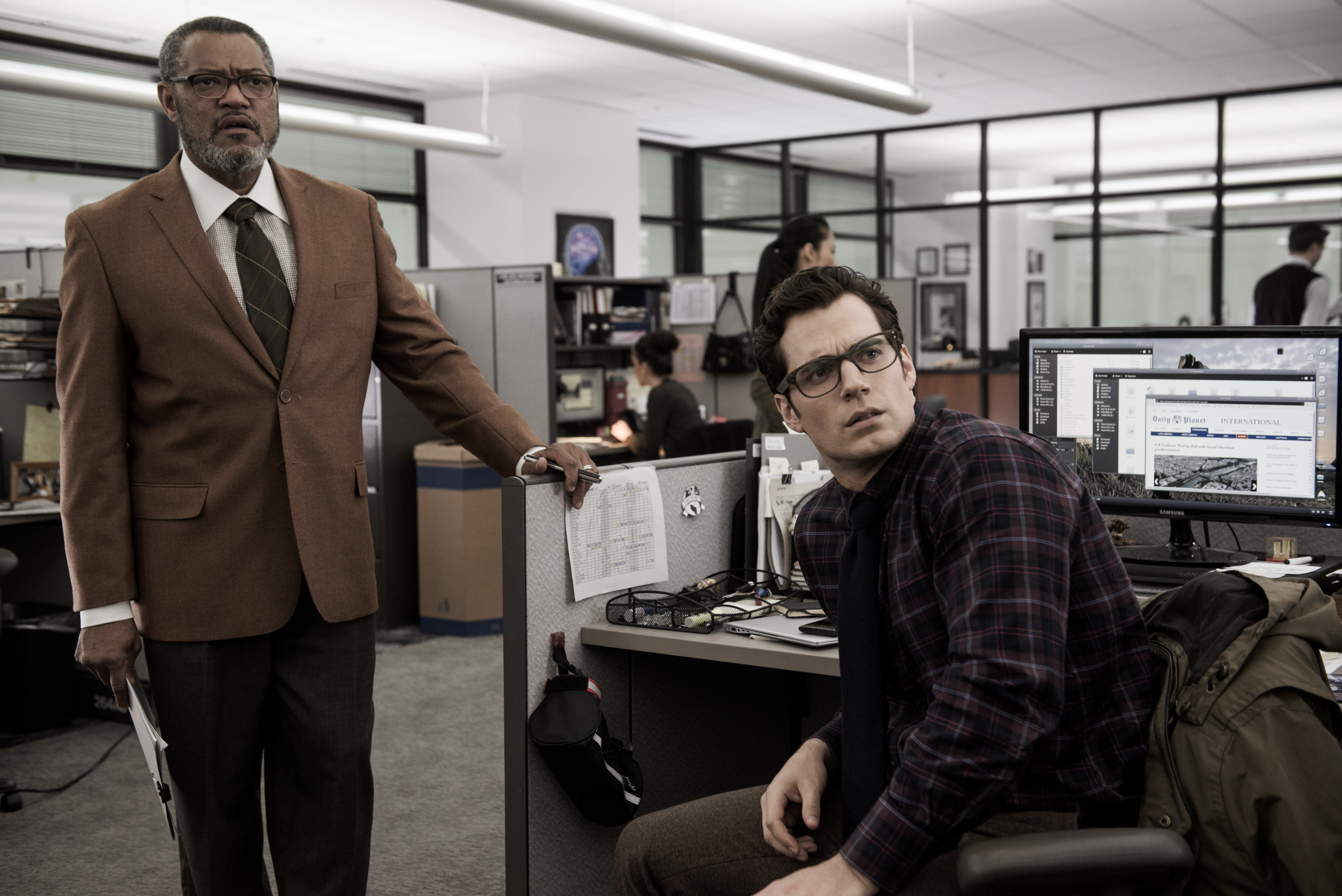 There are just a couple of rules to make sure that this works:
There are just a couple of rules to make sure that this works:
- Stay grounded in reality. I think that Marvel has a distinct edge here because their comics are set in real cities. Spiderman web slings around New York not Gotham and even though Thor is from Asgard he lands in New Mexico instead of Smallville. This connection to the audience is crucial and shouldn’t be downplayed.
- Don’t take yourself too seriously. I hate to quote the Joker, but “Why so serious?” Take Batman and Iron Man as examples. They were both orphaned as teenagers, they both inherited vast sums of money and were thrust to the top of their family’s empire, they are both crazy smart and have major character flaws, they both decide to don suits of their own creation to fight crime (albeit one is for revenge while the other is for redemption). So why is there so much difference between the brooding bat, and the playboy rocketman? Maybe you have to chock it up to their personalities, but I will tell you that moviegoers may appreciate a dark and contemplative movie that wrestles with existential quandries. They may even tolerate that from their superhero movie (Thank you Dark Knight) but if every film is like that, it isn’t as enjoyable. The Marvel films have walked this tightrope brilliantly, and I believe that it has made the difference in the success of their films and the detriment of others. In a word, a comic book movie should be, above all, fun.
- Tell great stories. This is more of a general principle for all movies and it kinda goes hand in hand with staying rooted in reality. As a movie-goer, if you don’t give me a compelling story that I can follow, I don’t care if you are Stanley Kubrick or Michael Bay, I will not care for your movie, because there is nothing to care about. That means that you can’t give me a movie that is so complex that I need to take notes as I go, and it can’t be so vapid that I feel like it has about as much substance as a balloon. When you have a huge film like Spiderman 3 with 3 newly introduced villains and then you waste precious character development time by throwing in a street dancing emo Peter Parker, the audience says nope, not worth it. On the flip side, you can have Captain America: Civil War with 12 Marvel Characters including a handful that we just met and as long as you give me funny dialogue, awesome special effects, and a believable story arc, they will be with you all the way.
I will say this, I didn’t hate Batman vs. Superman. It just left me wanting more and less at the same time, if that makes any sense. I wanted to see more depth of character than brooding and contemplative stares. I wanted the movie to be boiled down to a simple plot without DC getting ahead of itself and setting up a whole range of other movies that are in the pipeline. If the movie I’m watching isn’t great, it makes me much less excited about the future movies in the franchise.
This movie was almost enough to push the viewers into clinical depression. it is extremely dark and foreboding. Where was the fun DC? It left me craving Joel Schumacher Batman. I’m hoping that the DC universe is going to be darkest before the dawn, and now that we are after the dawn they will come out of their moody teenage angst. Tell me what you thought.
Deadpool (2016)
It’s hard to believe that it has been two years since we saw some exciting leaked footage, and who can forget (although I wish I could) his first big screen appearance seven years ago in X-Men Origins: Wolverine. Deadpool is the first R-rated mainstream comic book film adaptation. Had the aforementioned footage not been leaked (and subsequently gone completely viral) many believe that the studios would have never had the courage to make the Deadpool movie that fans really wanted. Lots of vocal and devoted fans stepped forward to pine for this movie’s creation, the most notable being its leading man. There is now a good case to be made that this will not be the last Deadpool film, much less the last adult themed comic book adaptation: This movie is legitimately good.
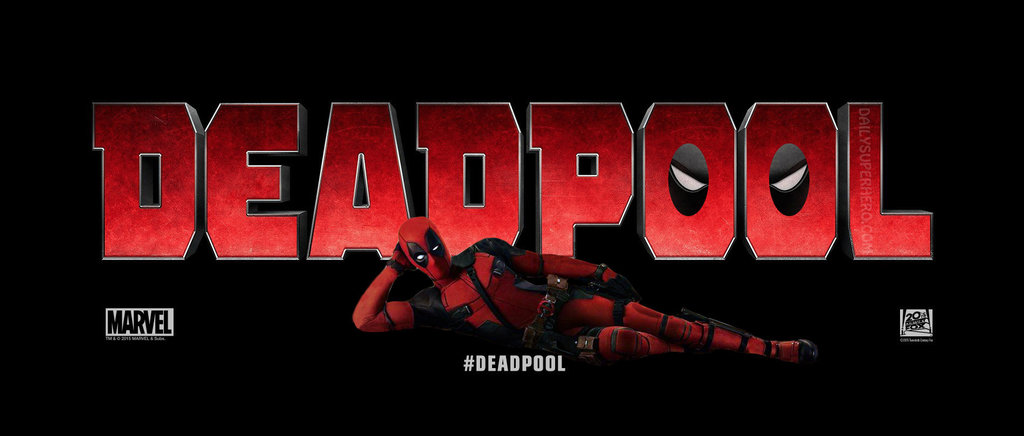
Without giving too much away, you need a simple primer on the Merc with a Mouth. According to Marvel’s info sheet, Deadpool possesses a superhuman healing factor, similar to but even greater than that of the mutant Wolverine, which allows him to regenerate damaged or destroyed areas of his cellular structure at a rate far greater than that of an ordinary human. As such, he can regrow severed limbs or vital organs. This healing factor also affords Deadpool an enhanced resistance to diseases and an extended life span. Due to the presence of this superhuman healing ability, many of Deadpool’s natural physical attributes have been enhanced, granting him superhuman levels of stamina, and his natural strength, agility and reflexes have been increased to levels that are beyond the natural limits of the human body. As if that weren’t enough, Deadpool is an extraordinary hand-to-hand combatant and is skilled in multiple unarmed combat techniques. He is a master of assassination techniques, is an excellent marksman, and is highly skilled with bladed weapons.
Say what you will about this sword-wielding, gun-toting, foul-mouthed, chimichanga-loving, fourth wall-breaking anti-hero, but Tim Miller and company absolutely nailed the character in his self-titled movie. Reynolds was always the prefect actor to play Wade Wilson as is evidenced by the brief introduction we have to his character in X-Men Origins: Wolverine before that awful transformation, but Deadpool also gave Ryan Reynolds a chance to spring back from the comic book purgatory which he landed in after his Green Lantern disappointment.
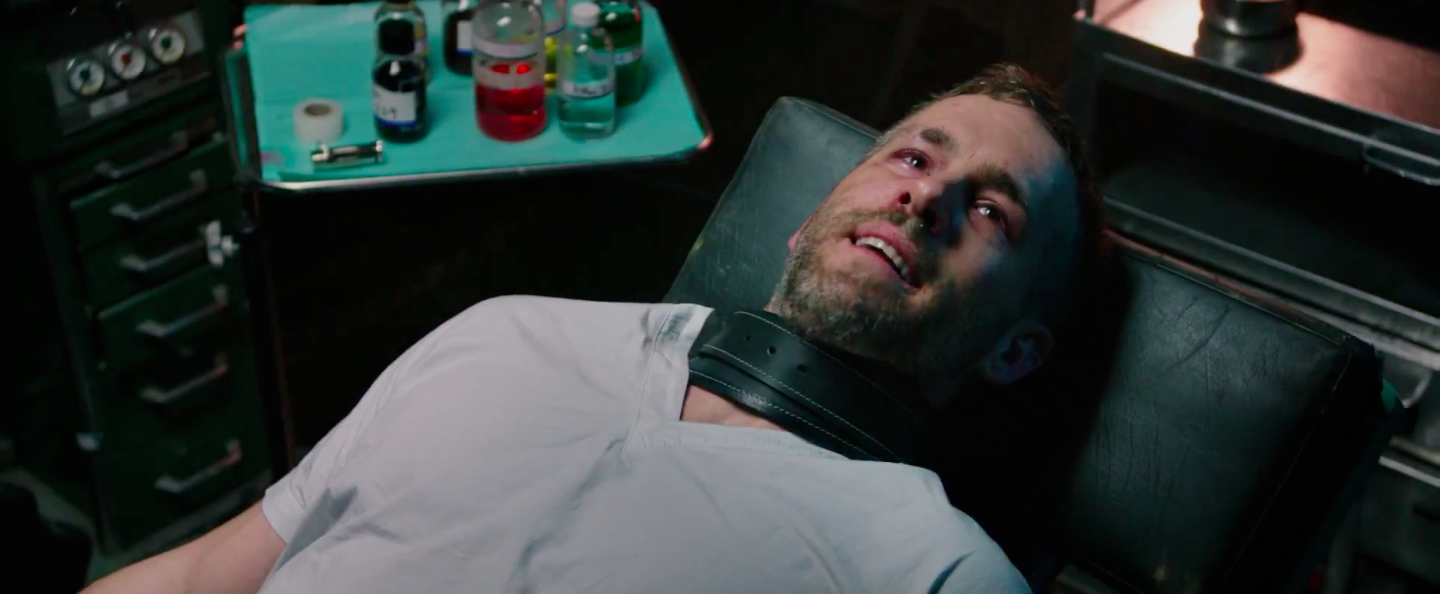
Deadpool did so much well. I was genuinely surprised by the way that it addressed my hopes and fears and still exceeded my expectations as a fanboy. In other words, I went in hoping for something appeasing and walked away having watched a genuinely good super hero movie. Here’s what the movie did particularly well:
- The humor was almost perfect. I use the qualifier “almost” because there were more than a couple instances when I felt like jokes were being thrown at me simply because one had not been uttered in the last few seconds. And, while some of the pop culture references hit me as a thirtysomething, I’m sure they missed the mark of an 18-year-old who may have never heard of Wham!, Ferris Bueller’s Day Off, or Faulty Towers. Criticism aside, the overwhelming majority of the jokes landed well and made sense in context. They didn’t overplay the fourth wall breaking and they managed a solid mix of witty (or obscene) one liners and hilarious physical comedy. You’ll laugh a lot, and you’ll probably feel guilty about some of the laughs, unless you’re a sociopath. But a lot of them are just good fun!
- Origin story was told well. The movie flip-flops between past and present with obvious transitions that did not jar the narrative flow. In fact, I think choosing to tell the story non-linearly was a great move especially given that Deadpool himself is our narrator and his mind moves as quickly as his swords. We get the great origin story and get to see the suit immediately.
- The supporting characters are handled well. Weasel holds his own as a character with T.J. Miller’s signature brand of comedy and gives us the origin of the Deadpool moniker.
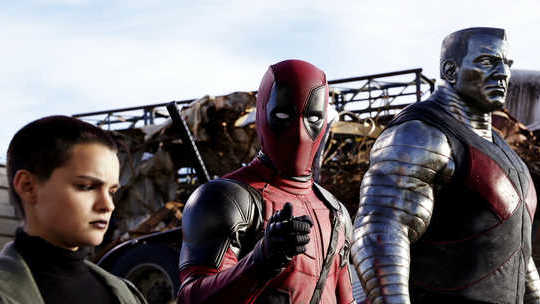 Blind Al and her relationship with Wilson makes sense and makes me want to see more (no pun intended). I think more could have been done to the connection between Colossus (who feels like a big jab at Green Lantern showing that a CGI character can work) and Deadpool than the implication that they’d discussed Wade’s joining the X-Men before, but the dynamic amongst that trio including Negasonic Teenage Warhead (who they completely revamped for this movie in a good way) is fantastic and it was fun watching the two X-Men go from policing Deadpool to having his back.
Blind Al and her relationship with Wilson makes sense and makes me want to see more (no pun intended). I think more could have been done to the connection between Colossus (who feels like a big jab at Green Lantern showing that a CGI character can work) and Deadpool than the implication that they’d discussed Wade’s joining the X-Men before, but the dynamic amongst that trio including Negasonic Teenage Warhead (who they completely revamped for this movie in a good way) is fantastic and it was fun watching the two X-Men go from policing Deadpool to having his back. - Deadpool is an anti-hero. You see him make selfish decisions. You see him make selfless decisions. You see him play nice with the good guys. You see him do things that the good guys definitely frown upon. In no moment is his antihero quality on display more perfectly than when he’s got his nemesis, Ajax, in his hands and Colossus intervenes. Perfect depiction, perfect ending.
- They have fun with Deadpool’s powers. From the obvious consequences of punching Colossus bare-fisted to exploring the speed and process of his regeneration when it comes to lost limbs, the movie uses his powers as a medium for more of Deadpool’s trademark comedy. But they also do a great job of showcasing how hard it is to slow down, significantly harm, or even kill the guy. At one point he’s got a combat knife wedged into his skull and is hardly any worse for the wear.
- The violence, while significant, is not too much. Deadpool definitely comes by its R rating honestly. It is not a movie for minors. Nudity and language aside, the violence element was actually well managed. It was never in your face and gratuitous; instead you saw what you would expect to see when an accomplished combatant utilizes guns and swords in the melee and Deadpool kills a lot of people in this movie.
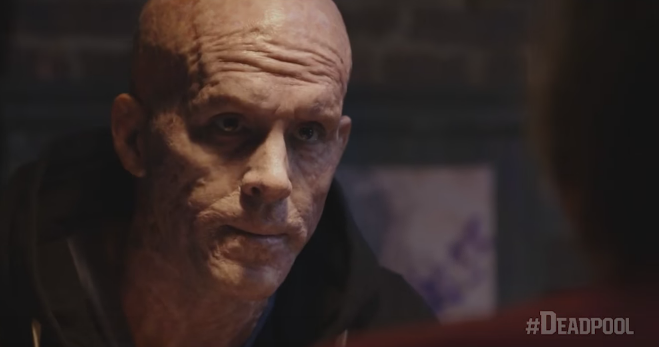
So here’s my final verdict. Assuming you’re at least of the legal age to watch this R-rated offering, and have an open mind about murders of revenge, hired hitmen, torture, and strippers, watch it. If you are like me, you will watch it multiple times then add it to your Blu-ray collection that stays out of the reach of your children’s fingers. All in all, as a stand-alone, origin story of a controversial but extremely popular character, they knocked this out of the park and it should be counted as one of the best of an ever growing list of great Marvel movies. I for one can’t wait to see Deadpool’s next adventure.
Political Movies
Like many Americans, I am watching the primary races with a keen eye. Unfortunately, that has taken much of my time that I would normally watch movies. I want to share some of my favorite political movies.
Immediately, I think of movies like V for Vendetta as well as The Last King of Scotland but if I am going to look at American politics, there are two movies that stand out head and shoulders above the rest.
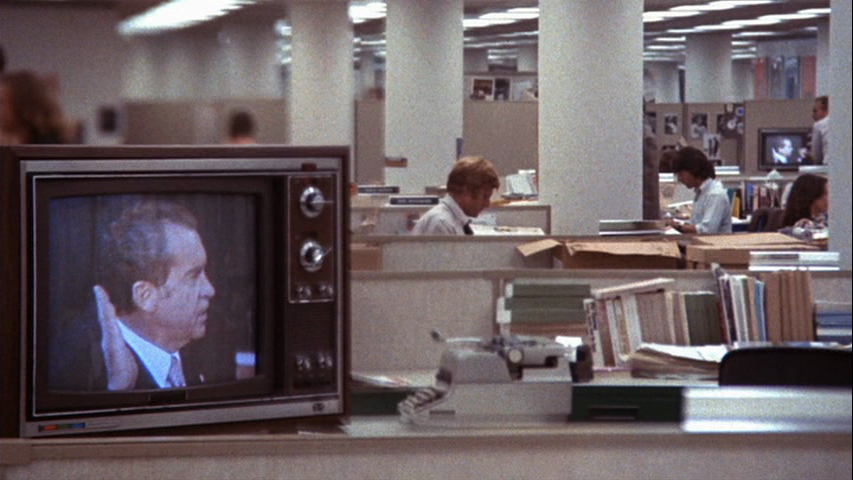 All the President’s Men – I referenced this movie just a few weeks ago when I looked at Spotlight because of the parallels that I saw in the two movies in terms of journalism. But All the President’s Men shows not only the journalistic side but also the political side of the Nixon Watergate scandal. It is seriously compelling and is well worth the time to watch it.
All the President’s Men – I referenced this movie just a few weeks ago when I looked at Spotlight because of the parallels that I saw in the two movies in terms of journalism. But All the President’s Men shows not only the journalistic side but also the political side of the Nixon Watergate scandal. It is seriously compelling and is well worth the time to watch it.
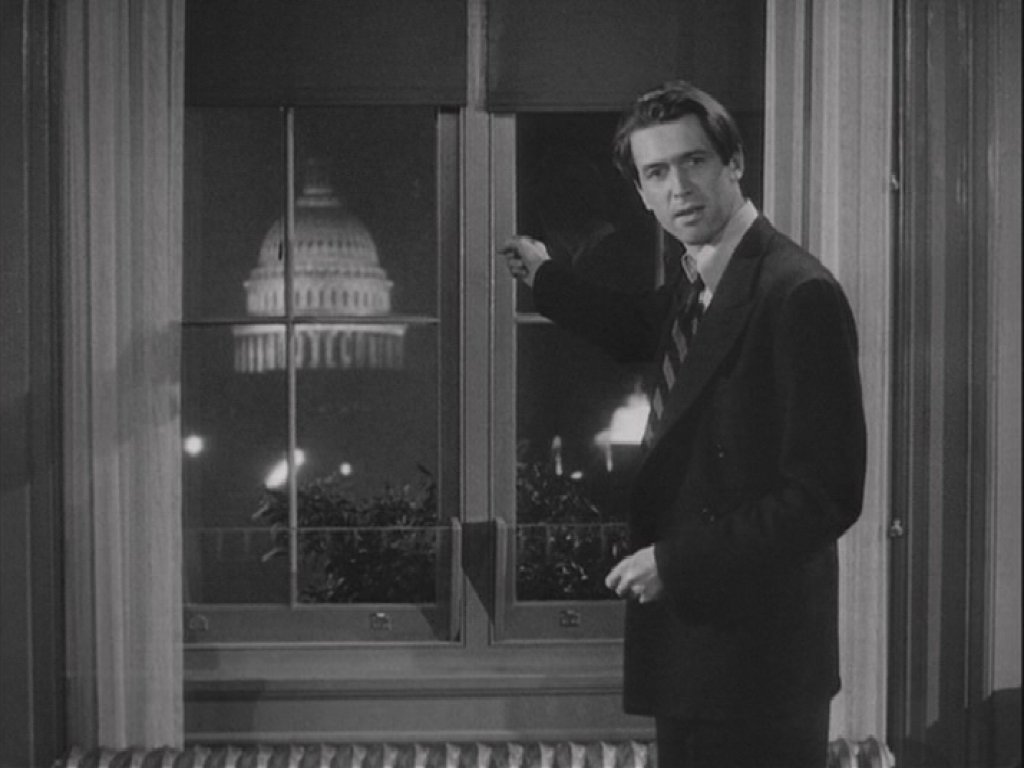 Mr. Smith Goes to Washington – I’m surprised that Marco Rubio doesn’t use this film on his Campaign trail. If you are unfamiliar, it tells the story of a man who is set to be a senator by the spineless governor of his state. He is a naive and idealistic and he wants to change everything starting from the building of a camp for children but his plans promptly collide with political corruption and there the true fight starts.
Mr. Smith Goes to Washington – I’m surprised that Marco Rubio doesn’t use this film on his Campaign trail. If you are unfamiliar, it tells the story of a man who is set to be a senator by the spineless governor of his state. He is a naive and idealistic and he wants to change everything starting from the building of a camp for children but his plans promptly collide with political corruption and there the true fight starts.
I enjoyed this movie because it addresses what we all know but never want to believe or talk about. How political corruption influences all of us and our lives as politicians and leaders just want to earn more and more wealth and power. But, this movie also shows us the other side of the story: a decent man who believes in something, and fights for his beliefs until the end. I might just write Jefferson Smith on my ballot.
Tell me what you think. What is your favorite political movie and why?
Carol (2015)
I am so conflicted about this movie. it is sitting on top of many critics best of the year list, Cate Blanchett is almost certainly going to win an Oscar for her titular role, and while I don’t think it is necessarily a bad movie I am certainly unconvinced of its apparent brilliance.
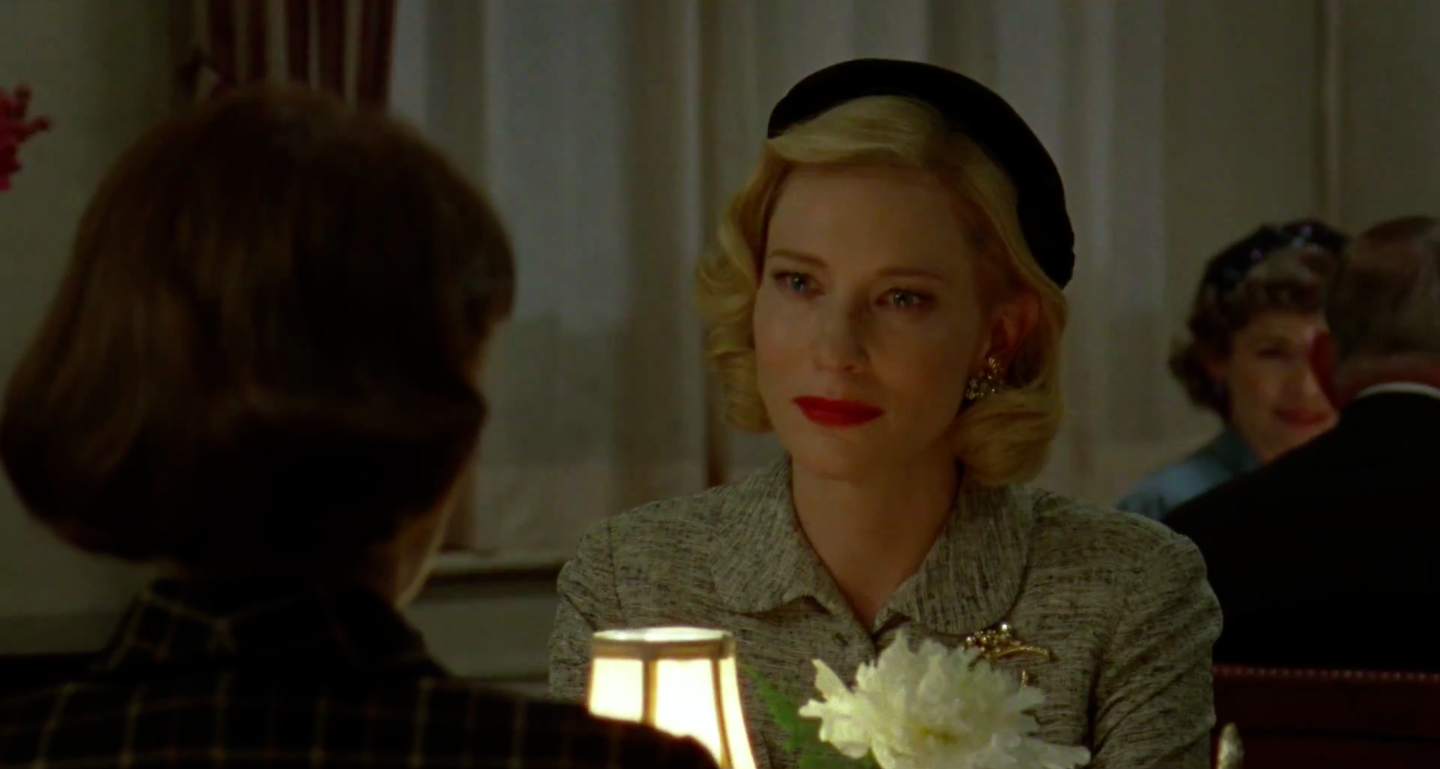 Carol is a fictional story based upon a novel written by Patricia Highsmith. This is the same author who wrote The Talented Mr. Ripley and Strangers on a Train. The novel, “The Price of Salt” was written under a pseudonym, Claire Morgan, perhaps because Highsmith was concerned about the backlash of writing a lesbian love story in 1952, but almost certainly because she drew so much of the meat of the story from her own life. Read how The New Yorker tells the story behind the story.
Carol is a fictional story based upon a novel written by Patricia Highsmith. This is the same author who wrote The Talented Mr. Ripley and Strangers on a Train. The novel, “The Price of Salt” was written under a pseudonym, Claire Morgan, perhaps because Highsmith was concerned about the backlash of writing a lesbian love story in 1952, but almost certainly because she drew so much of the meat of the story from her own life. Read how The New Yorker tells the story behind the story.
December of 1948, Patricia Highsmith was a twenty-seven-year-old aspiring writer with a murderous imagination and an outsized talent for seducing women. Her first novel, “Strangers on a Train,” was complete, but it would be more than a year before it was published. A Texas native with thick black hair and feral good looks, Highsmith made a habit of standing at attention when a woman walked into the room. That Christmas season, she was working behind the toy counter at Bloomingdale’s, in Manhattan, in order to help pay for psychoanalysis. She wanted to explore the sharp ambivalence she felt about marrying her fiancé, a novelist named Marc Brandel. Highsmith was a Barnard graduate, and, like many sophisticates at the time, she viewed homosexuality as a psychological defect that could be fixed; yet she had enough self-respect and sexual appetite to reject any attempt to fix her own. When her analyst suggested that she join a therapy group of “married women who are latent homosexuals,” Highsmith wrote in her diary, “Perhaps I shall amuse myself by seducing a couple of them.” She never married Brandel—or anyone else.
One day, a woman in a mink coat drifted into the toy department. Highsmith later recalled, “Perhaps I noticed her because she was alone, or because a mink coat was a rarity, and because she was blondish and seemed to give off light.” Like Alfred Hitchcock, Highsmith was captivated by frosty blondes, all the more so if they were married and rich. The shopper, who slapped her gloves into one hand as she scanned the merchandise, made Highsmith feel “odd and swimmy in the head, near to fainting yet at the same time uplifted.” With an abstracted air, the woman, Mrs. E. R. Senn, bought a doll from Highsmith.
That night, Highsmith wrote an eight-page outline for a novel: a love story about Therese Belivet, a diffident nineteen-year-old who lives on her own in New York City, and Carol Aird, a wealthy suburban wife and mother in her thirties. Highsmith conjured what Therese would feel upon catching her first glimpse of Carol: “I see her the same instant she sees me, and instantly, I love her. Instantly, I am terrified, because I know she knows I am terrified and that I love her. Though there are seven girls between us, I know, she knows, she will come to me and have me wait on her.”
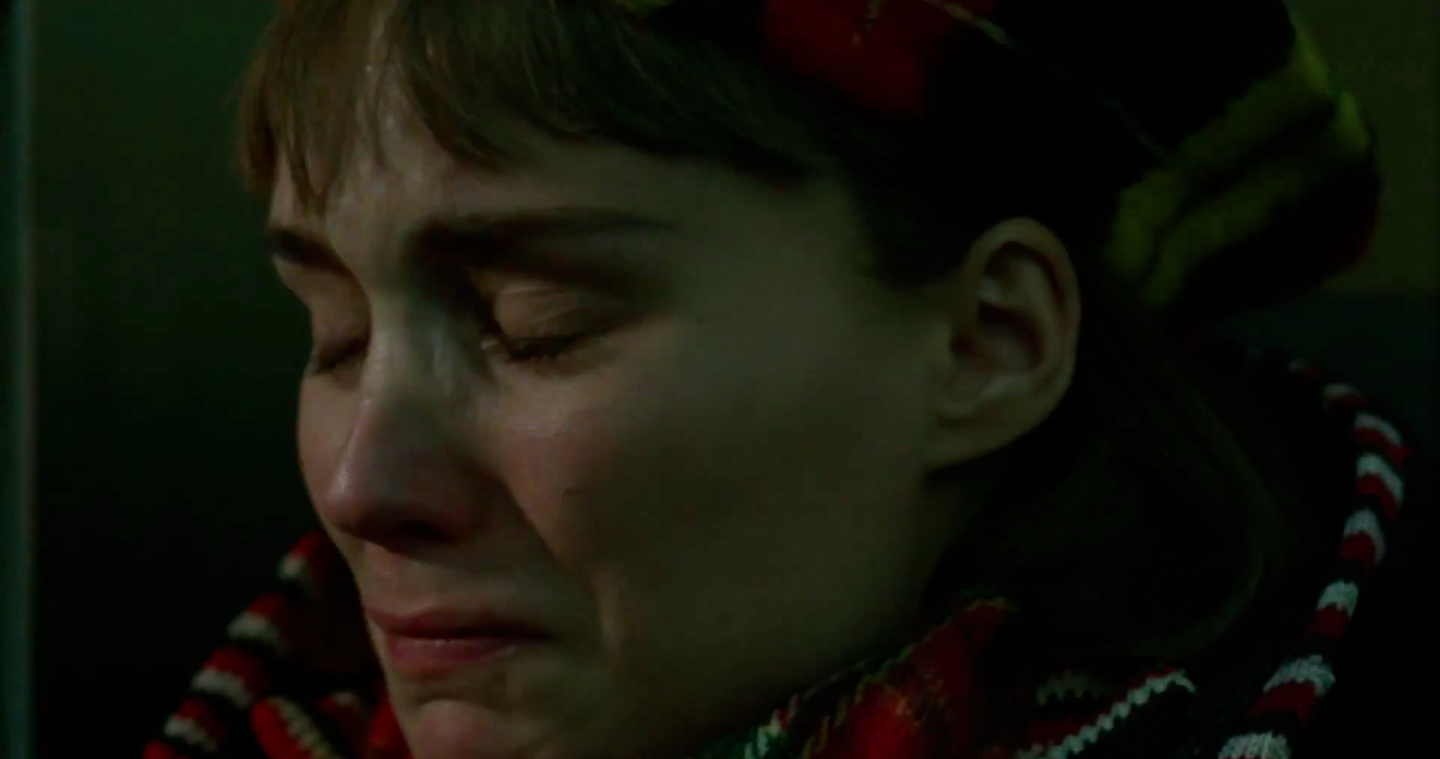 So you now know the basic story behind Carol. A doe-eyed young shopgirl struggles with her identity as she befriends and begins to fall in love with an upper-class older woman going through a difficult divorce. It is such a simple premise for a film, and in today’s world of legalized gay marriage and homosexual characters on seemingly every television show it could have felt trite and boring. But this is not a 2016 retelling of a 1950s story. This is a 1950s film, and if we were able to take a Delorean back to 1955 and present Carol it would be apparent that this film is right on the cutting edge.
So you now know the basic story behind Carol. A doe-eyed young shopgirl struggles with her identity as she befriends and begins to fall in love with an upper-class older woman going through a difficult divorce. It is such a simple premise for a film, and in today’s world of legalized gay marriage and homosexual characters on seemingly every television show it could have felt trite and boring. But this is not a 2016 retelling of a 1950s story. This is a 1950s film, and if we were able to take a Delorean back to 1955 and present Carol it would be apparent that this film is right on the cutting edge.
I have told my wife while playing those silly would you rather type games that if given the choice of just about any era in history, I think I might step into the 1950s. It was such an elegant time. Everything was ordered and in its place. We had just won World War II and the country was in a time of growth and prosperity. There were values which governed the society. I think of The Andy Griffith show and Leave it to Beaver. I think I could have fit very well in that time period. However, I also know that the image that I have of that time is completely created by Hollywood and television. I don’t know what it was like to really live in that environment, but I can only imagine that with the hard swing that the culture took in the 1960s that the 1950s were working too hard to keep everyone confined in their perfectly manicured and carefully constructed social norms.
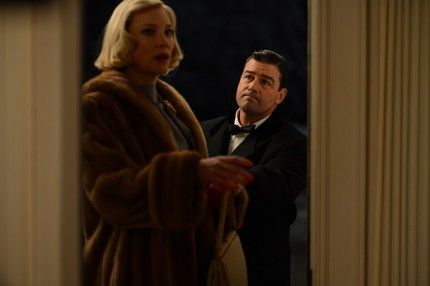 I’m not sure why this movie is titled Carol. To me, Carol (Cate Blanchett) had a much less interesting role in the film than that of Therese (Rooney Mara). Therese grows before our eyes while Carol is set in her ways before we ever meet her. Certainly, both characters stories unfold before us throughout the film, but if I had to pick a lead and supporting character, I’m choosing Therese as the lead. I mean there is no doubt that the author placed herself in the story as her. And although Carol suffers more dramatic hurdles and setbacks I felt much more connected to Therese and her internal struggle.
I’m not sure why this movie is titled Carol. To me, Carol (Cate Blanchett) had a much less interesting role in the film than that of Therese (Rooney Mara). Therese grows before our eyes while Carol is set in her ways before we ever meet her. Certainly, both characters stories unfold before us throughout the film, but if I had to pick a lead and supporting character, I’m choosing Therese as the lead. I mean there is no doubt that the author placed herself in the story as her. And although Carol suffers more dramatic hurdles and setbacks I felt much more connected to Therese and her internal struggle.
I always feel like I have missed something whenever I go so strongly against the grain of other film critics, but in this case I have to say that I did not feel a great deal of chemistry between Mara and Blanchett. I could see the tortured look on Mara’s face as she struggled with her identity but I did not see any of the attraction that was supposed to lie beneath that struggle. I could look at the pained and frustrated expressions on the face of, Carol’s soon to be ex-husband, Harge and I was there I could feel his struggle to love and difficult woman who is slipping away from him. It baffles me to think that Cate Blanchett nearly has this Oscar in the bag for a role that felt very phony to me. In fact, everything else in the film feels ultra realistic, but the titular character left me feeling flat.
The first hour of this film feels so slow and deliberate with almost exclusive use of motionless camera shots, wide pans, combined with drastic closeups. This was very intentional by Director Todd Haynes, who previously filmed this era with a keen eye in Far from Heaven. But this dramatic shift in pace takes a while to get used to. I found myself feeling kind of bored and was itching to check my phone or something, but it struck me that Haynes was purposefully trying to bring the viewers into the 1950s even if for just a few hours. Not just through set design which was superb but in pacing and feel. This was a time without television, internet, and mobile devices, an age where an electric train set or a hand-painted porcelain doll was the Christmas gift of choice. Much of the film would be spent in silence were in not for the ethereal quality of the soundtrack provided by the illustrious Carter Burwell. There is not a lot of dialogue, mostly long shots of faces and reactions, glances and lingering touches. I felt it was appropriate that the studio created a beautiful wordless trailer for the film. It really seems to fit the film and encapsulates the desire of the film maker.
https://www.youtube.com/watch?v=bF1YIF_FknI
However, as beautiful as this film was. I can’t help but think that Haynes did not go far enough. I wish that he had gone the whole way and made a film that might have passed the 1950s Hays code. The scene in the department store is nearly perfect. These two ladies are connected by a glance and it is broken too quickly. There is an awkward conversation about a girl who didn’t play with dolls and the purchase of a train set as a Christmas present for a little girl. I wish the film would have left us in that 1950s world instead of giving us a completely unnecessary shot of Rooney Mara having her shirt pulled open. Perhaps I am far too old fashioned, but I just miss the days when there were things that were considered taboo. And it took a very deft director’s hand to carefully navigate and hint at something as taboo as a lesbian love story. Unfortunately, we live in an anything goes type of climate today and after the first hour of navigating awkward conversations and couples fighting about former relationships I thought that Haynes might just produce a subtle and authentic period piece which addressed the elephant in the room without shooting him dead. But instead, I’m just left longing for Audrey Hepburn, Lauren Bacall, Bette Davis, and Jimmy Stewart.

